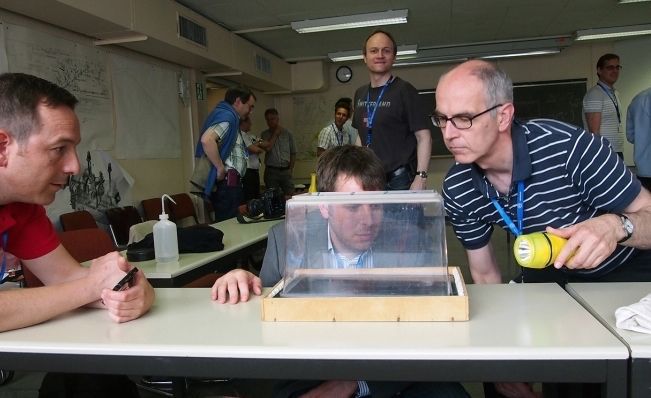Particles made visible
Cosmic particles from space are constantly reaching the Earth. They fly through us, yet we can neither feel them nor see them. A cloud chamber makes these cosmic particles visible. The experiment can be built with students in only five to ten minutes. It is particularly well suited for a course on astroparticle or particle physics.
The building instructions and other information are available for download at the bottom of the page (in German).

Physicist Hans Peter Beck explains what exactly is being observed in a cloud chamber: "With this experiment, cosmic particles are made visible, but actually only a few of the events that appear in the cloud chamber are truly tracks of cosmic particles. The reason is the following: Cosmic particles come mostly from above, and only rarely from the side. They are therefore - if at all - only visible as very short tracks or small dots. Because the cloud chamber is only a few millimeter thick and whatever crosses it perpendicularly can only leave behind a short vertical track. Only very few (!) cosmic particles are effectively coming from the side and can also from time to time make a long track.
What one mainly sees in a cloud chamber is the radioactivity of the environment. There are everywhere radioactive nuclei that can produce alpha or beta decays. If one of these nuclei happens to decay inside the cloud layer, the alpha particle (helium nucleus) or beta particle (electron) have good chances to leave a long track in the chamber. But it can happen as well (rarely!) that an alpha or an electron flies perpendicularly to the cloud layer - then it leaves a very short visible track, which however doesn't originate from a cosmic particle.
In short: Our cloud chamber allows us to observe cosmic particles, but above all alphas and betas from radioactive nuclei. The 'fat bumblebees' - particularly well visible by eye - are actually alphas."

